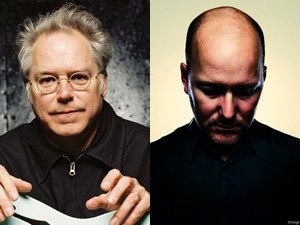Upcoming Events

The Mississippi River Flood of 1927 was an epic disaster, wreaking horrible havoc on an entire region of our country and displacing thousands, including scores of Delta blues performers who took their music north to cities like Chicago. Composed by jazz great Bill Frisell, The Great Flood is an evening-long suite accompanied by Bill Morrison’s film that tells the story of these musicians and how their migration transformed American music forever.
The Great Flood is a film-music collaboration by Bill Morrison and Bill Frisell, based on and inspired by the catastrophic Mississippi River Flood of 1927 and the ensuing transformation of American society.
The Mississippi River Flood of 1927 was the most destructive river flood in American history. In the spring of 1927, the river broke out of its earthen embankments in 145 places and inundated 27,000 square miles. Part of its legacy was the forced exodus of displaced sharecroppers, who left plantation life and migrated to northern cities, adapting to an industrial society with its own set of challenges. Musically, this Great Migration fueled the evolution of acoustic blues (including artists who witnessed the flood, such as Charley Patton and his “High Water Everywhere,” as well as Memphis Minnie and her “When the Levee Breaks”) to electric blues bands that thrived in cities like Memphis, Detroit, and Chicago, becoming the wellspring for R&B and rock, as well as developing jazz styles.
Frisell has drawn upon his wide musical palette, informed by elements of American-roots music and refracted through his uniquely evocative approach, which highlights essential qualities of his thematic focus. Morrison’s work is based on actual footage of the 1927 flood, including source material from the Fox Movietone Newsreel Archive and the National Archives. All footage documenting this catastrophe was shot on volatile nitrate stock, and what footage remains is pock-marked and partially deteriorated. The degraded footage figures prominently in Morrison’s aesthetic, with distorted images emerging from nitrate prints that suggest different planes of reality in the story—those lived, dreamt, or remembered. In The Great Flood, the bubbles and washes of decaying footage are associated with the destructive force of rising water, the footage seeming to have been bathed in the same water as the images depicted on it. These layers of visual information, paired with Frisell’s music, become contemporary again. We see the images through a prism of history—but one that dances with the sound of modern music.
